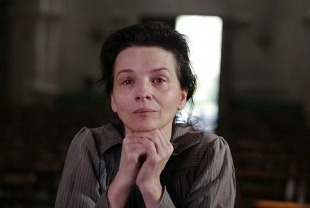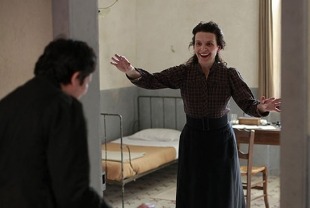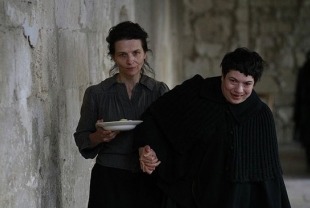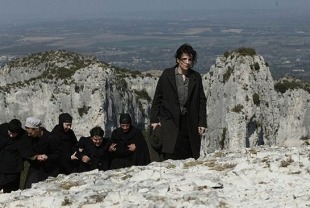Do you feel imprisoned by something? Perhaps an addiction, anger, fear, a domineering lover or parent, an unhappy marriage, a vengeful enemy, or a meaningless job? If so, you know the kind of isolation and anxiety that come from feeling trapped.
If you have ever yearned to break free from something, you will be able to identify with the plight of Camille Claudel (1864-1943), a talented sculptor and protege of Auguste Rodin who was committed to an asylum in 1913 by her brother Paul Claudel, a poet, playwright, and diplomat who saw himself as a Christian mystic.
In this eerie and scary film, we empathize with Camille (Juliette Binoche) as she wanders the corridors of a chilly asylum in France run by Catholic nuns. She has set herself apart from the mostly disabled and mad men and women who inhabit this place where there is little silence given the wails, moans, and cackling of the patients. Camille is convinced that someone is going to poison her so she sits in the kitchen by the stove until her dinner is ready. Then she eats alone.
In a letter to her brother Paul, Camille wrote: "Madhouses are houses made on purpose to cause suffering . . . I cannot stand any longer the screams of these creatures." At one point, she finds some solace sitting on a bench in the sun and looking at a barren tree. She walks to a room, picks up a pen, and within minutes has sketched a perfect replica of what she has just seen. Then she breaks down and cries.
This scene reminds us that Camille Claudel was immensely talented. After the end of her love affair with Rodin, she moved to her own studio in Paris where she created many amazing sculptures of her own. But even then she was unhinged by an obsession that her mentor was out to destroy her life and artistic career.
Camille's spirits are lifted when she learns that Paul is coming to visit. She had written him: "I would so like to go home and close the door tightly." On his way to the asylum, Paul visits a church and regales a priest with the rigors of his faith in God and the mystical insights he gleaned from the poet Arthur Rimbaud. He is a Catholic whose religious experiences have lifted him away from the earth and its suffering and messiness.
Camille Claudel 1915 is directed by Bruno Dumont whose screenplay covers three days in her life based on her letters and medical records. The writer/director's tightly focused examination of the troubled sculptress is quite different from Bruno Nuytten's Camille Claudel (1989) which focused on the stormy relationship she (Isabelle Adjani) had with Auguste Rodin (Gerard Depardieu). Most interesting is the insights we glean from this film about Camille's family and their mixed feelings about her talent, pride, and vindictiveness.
The laser-like intensity of Camille Claudel 1915 brings to mind Hadewijch, Dumont's austere film about the results of religious zealotry and the mysteries of divine grace. In both stories, we witness the dangers of Christian pride and the pain that this arrogance and selfishness can bring into the lives of others. In Camille Claudel 1915, Juliette Binoche gives another outstanding performance as a creative woman punished for her talent and independence. She vividly conveys the mood swings of this 50-year old individual are she yearns for liberty and a life of her own.
Special features on the DVD include a stills gallery.



